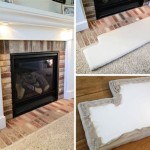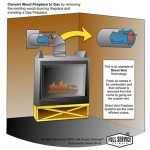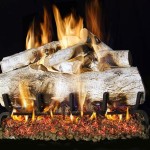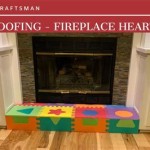Family Room Layout Solutions with a Corner Fireplace
Designing a family room with a corner fireplace presents a unique set of challenges and opportunities. The fireplace, often a focal point, dictates furniture placement and the overall flow of the room. Maximizing space, fostering conversation, and achieving a balanced aesthetic require careful consideration of various factors, including room size, shape, window placement, and personal preferences. This article provides a comprehensive guide to navigating the complexities of family room layouts featuring a corner fireplace, offering practical solutions for creating a functional and visually appealing space.
The corner fireplace inherently introduces an angular element that can disrupt the natural lines of a rectangular or square room. Unlike a centrally located fireplace, which naturally divides the room into symmetrical halves, a corner fireplace requires a more nuanced approach to create visual equilibrium. Common mistakes include pushing all furniture against the walls, resulting in an empty, unused center, or ignoring the fireplace's presence altogether, leading to a disjointed and unbalanced design.
Effective corner fireplace layouts prioritize conversation, comfort, and visual appeal. This often involves strategically positioning furniture to both acknowledge and complement the fireplace, creating a welcoming environment for relaxation and social interaction. The principles of balance, proportion, and focal point management are essential in achieving a harmonious and functional family room.
Establishing a Focal Point and Conversation Area
The primary consideration when designing a family room with a corner fireplace is establishing the fireplace as a focal point while simultaneously creating a comfortable and inviting conversation area. The fireplace's natural dominance can be leveraged to anchor the room's design, but it should not overshadow other elements. The goal is to create a balanced composition where the fireplace enhances the overall aesthetic without overwhelming the space.
One common approach is to arrange seating around the fireplace in a semi-circular configuration. A sofa placed perpendicular to the fireplace, with chairs flanking either side, creates a natural conversation area that directs attention towards the heart of the room. This arrangement allows for comfortable communication and maximizes the fireplace's visibility from various seating positions. The distance between the seating and the fireplace should be proportionate to the room's size; avoid placing furniture too close, which can feel cramped, or too far, which can diminish the sense of intimacy. Consider using an area rug to further define the conversation area and visually connect the furniture pieces.
Another effective strategy involves using a sectional sofa to define the seating area. Position one section of the sofa along a wall adjacent to the fireplace, and the other section facing the fireplace. This creates a natural "L" shape that anchors the corner and provides ample seating for a group. Complement the sectional with accent chairs or ottomans to provide additional seating options and enhance the overall comfort of the space. This configuration is particularly well-suited for larger family rooms, where a sectional sofa can help to fill the space and create a more defined living area.
Incorporating a coffee table in the center of the seating arrangement is crucial for functionality and aesthetics. A coffee table provides a surface for drinks, snacks, and decorative items, while also serving as a visual anchor for the conversation area. Choose a coffee table that is proportionate to the size of the sofa and chairs, and ensure that there is adequate space for people to move around it comfortably. Consider a round or oval coffee table to soften the angularity of the corner fireplace and create a more inviting atmosphere.
Balancing Visual Weight and Creating Symmetry
Achieving visual balance is paramount in a family room with a corner fireplace. The fireplace itself possesses considerable visual weight, which can throw the room off balance if not addressed thoughtfully. Symmetry, while not always strictly necessary, can be a valuable tool in creating a sense of order and harmony.
One technique for balancing the visual weight of the fireplace is to incorporate a large piece of artwork or a mirror on the wall opposite the fireplace. This creates a visual counterweight that prevents the fireplace from dominating the room. The size of the artwork or mirror should be proportionate to the size of the fireplace and the scale of the room. A large abstract painting or a decorative mirror with an ornate frame can effectively draw the eye and create a focal point on the opposite wall.
Another approach is to use shelving or built-in cabinetry to balance the fireplace. Shelving units can be placed on either side of the fireplace to create symmetry and provide storage space. The shelves can be styled with books, decorative objects, and plants to further enhance the visual appeal of the room. If symmetry is desired, ensure that the shelving units are identical in size and design. Alternatively, asymmetrical shelving can be used to create a more dynamic and contemporary look.
Lighting plays a critical role in balancing visual weight and creating a cohesive design. Strategically placed lamps can illuminate dark corners and highlight specific features of the room. Floor lamps can be used to balance the height of the fireplace, while table lamps can provide ambient lighting and create a cozy atmosphere. Consider using dimmer switches to adjust the lighting levels and create different moods. Accent lighting can be used to highlight artwork or architectural details, further enhancing the visual balance of the room.
Color also contributes to visual balance. Dark colors tend to absorb light and create a sense of weight, while light colors reflect light and create a sense of spaciousness. Use color strategically to balance the visual weight of the fireplace and create a harmonious color palette. For example, if the fireplace is made of dark stone, consider using lighter colors on the walls and furniture to create a sense of balance. Conversely, if the fireplace is made of light-colored brick or stone, darker colors can be used on the walls and furniture to create a more dramatic effect.
Maximizing Space and Addressing Awkward Angles
Corner fireplaces often create awkward angles that can be challenging to work with. Maximizing space and addressing these angles requires creative solutions and a willingness to think outside the box. The goal is to transform these challenges into opportunities, creating a functional and visually interesting space.
One effective strategy is to use corner shelves or cabinets to fill the awkward space created by the angled walls. Corner shelves can provide storage space for books, decorative objects, or media equipment. Corner cabinets can be used to conceal clutter or provide additional storage for linens or games. Choose shelves or cabinets that complement the style of the fireplace and the overall design of the room. Custom-built shelving or cabinetry can be tailored to fit the specific dimensions of the corner, maximizing space and creating a seamless look.
Another approach is to use plants to soften the angularity of the corner and create a more natural feel. Tall plants can be placed in the corner to fill the vertical space and draw the eye upward. Potted plants can be arranged on shelves or tables to add greenery and texture to the room. Choose plants that thrive in the lighting conditions of the room and complement the overall design aesthetic. Consider using a variety of plant sizes and shapes to create a visually interesting and dynamic arrangement.
When organizing seating it can also be useful to angle furniture. Angling a chair or a small love seat in the corner can soften the hard angles of the room and it can allow for easier conversation. You can then add a floor lamp or small side table to fill in the remaining space around the furniture. Don't be afraid to think outside of the box here. Be it a rocking chair, or a unique art piece, if you're struggling with a corner, you may want to pick something that's not a standard type of furniture.
Mirrors can also be used to create the illusion of more space and reflect light, making the room feel brighter and more open. A large mirror placed on the wall opposite the fireplace can visually expand the room and create a sense of depth. Smaller mirrors can be used to reflect light into dark corners, brightening up the space and making it feel more inviting. Consider using mirrors with interesting frames or shapes to add visual interest to the room.
Ultimately, designing a family room with a corner fireplace is a balancing act between functionality, aesthetics, and personal preference. By carefully considering the fireplace's position, the room's dimensions, and the principles of design, a homeowner can create a space that is both visually appealing and conducive to comfortable living.

How To Design Around A Corner Fireplace

Awkward Living Room Layout With Corner Fireplace

How To Arrange Furniture With A Corner Fireplace Setting For Four Interiors

How To Arrange Furniture Around A Corner Fireplace Bloom In The Black

Are You Planning To Build A Fireplace In The Living Room Visit This Websi Furniture Placement Corner Layout

Arranging Furniture With A Corner Fireplace Brooklyn Berry Designs

How To Arrange Furniture With A Corner Fireplace Setting For Four Interiors

Awkward Living Room Layout With Corner Fireplace

6 Hints To Arrange A Living Room With Corner Fireplace Roomhints

How To Arrange Furniture In A Room With Corner Fireplace The Decorologist








